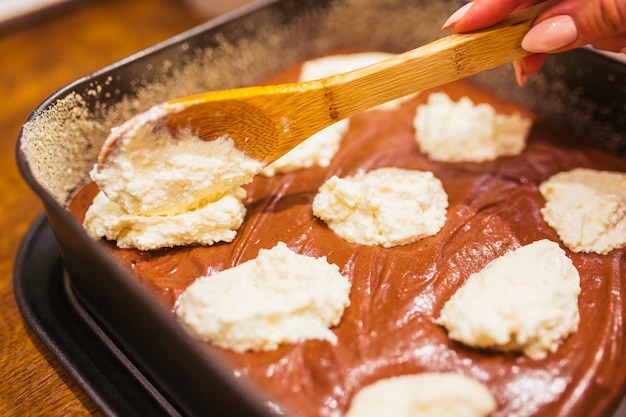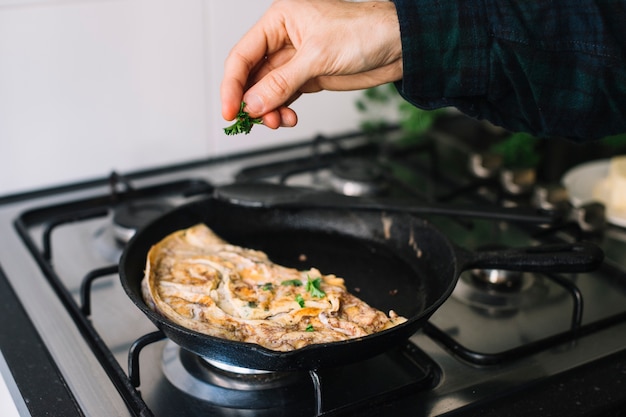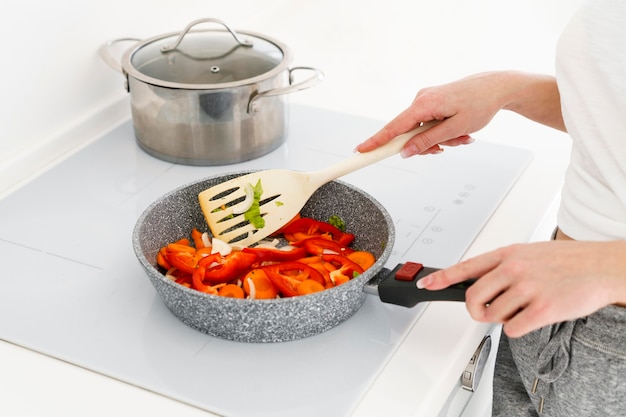There's nothing quite like the taste of perfectly seared scallops. They’re so incredibly tender, with a delicate sweetness that just melts in your mouth. And that beautiful golden-brown crust? It’s a culinary symphony! Over the years, I've made my fair share of scallop dishes, learning a thing or two about getting them just right. So, grab your apron, gather your ingredients, and let's embark on this delicious journey together.
(Part 1) Choosing Your Scallops: The Foundation of a Delicious Dish

The first step to a delicious scallop dish is choosing the right ones. You don't want to just grab the first bag you see at the supermarket; a little knowledge goes a long way. Let's dive into the world of scallops!
Size Matters: Picking the Perfect Scallop
Scallops come in various sizes, and each size is ideal for different cooking methods. For pan-searing, we want scallops that are about 1-1.5 inches in diameter. They should be firm and plump, with a nice, even colour, not too pale or too dark. These "medium" sized scallops offer the perfect balance of sear and tenderness. If you get ones that are smaller, they’ll cook too quickly and might be a bit chewy. And if you get ones that are too big, they’ll take longer to cook and might end up overcooked, becoming tough and rubbery.
Fresh is Best: The Importance of Quality
I always go for the freshest scallops I can find. Look for ones that are chilled and have a slightly sweet, briny smell. Avoid any scallops that have a fishy odour, as this could mean they're not fresh. It's a good idea to ask your fishmonger for advice, as they'll be able to tell you the best scallops available and how to spot the signs of freshness. I also try to avoid those pre-cooked ones; the texture just doesn’t compare to fresh, pan-seared scallops. Plus, pre-cooked ones often lose their beautiful natural flavor.
(Part 2) Preparing Your Scallops: Setting the Stage for Success

Once you've got your perfect scallops, it's time to get them ready to cook. This part is surprisingly simple but makes a big difference in the final result.
Pat Them Dry: Essential for a Crisp Sear
You want to pat your scallops dry with paper towels before cooking. This will help them sear properly and prevent them from steaming in the pan, which can make them tough and rubbery. Think of it as ensuring a crisp, golden-brown crust on the outside and a tender, juicy center.
Season Simply: Don't Overshadow the Delicate Flavor
Scallops have a delicate flavour that doesn't need to be overwhelmed by strong spices. I usually just season them with salt and pepper, maybe a little lemon zest for brightness. Let the scallops shine with their natural sweetness. Too many herbs and spices can mask their delicate flavor.
Don't Overcrowd the Pan: Space for Success
This is a big one! You want to give your scallops plenty of room to cook, so don’t overcrowd the pan. If you do, they’ll steam instead of sear, and you won’t get that beautiful crust we're aiming for. Cook them in batches if necessary. It's better to have a few batches of perfectly seared scallops than a whole pan of underwhelming ones.
(Part 3) Mastering the Art of Searing: Achieving a Golden-Brown Perfection

Now, here comes the fun part: searing your scallops. This is where things get a little more technical, but don't worry, I'll guide you through it step-by-step.
Get Your Pan Hot: The Key to a Perfect Crust
This is key! You need a very hot pan to get that perfect sear. I usually heat a cast-iron skillet over medium-high heat until it's smoking hot. Cast iron is great for this because it holds the heat well, but any heavy-bottomed pan will do. The heat is crucial for getting that beautiful crust and ensuring the scallops cook quickly and evenly.
Add a Bit of Fat: Preventing Sticking and Adding Flavor
To prevent your scallops from sticking, add a little bit of fat to the hot pan. I like to use butter, but you can also use olive oil or a combination of both. Let the fat melt and shimmer before adding your scallops. The fat helps to create a flavorful sear and prevents the scallops from sticking to the pan.
Sear for Perfection: Timing is Key
Now, this is the crucial part. You want to sear your scallops for about 2-3 minutes per side, or until they’re golden brown and cooked through. You'll know they're done when they're firm to the touch and have a slightly opaque colour, no longer translucent. Don’t overcook them, or they’ll become tough and rubbery. And don’t move them around too much while they’re cooking. Just let them sit and sear, and they’ll release themselves from the pan when they’re ready. It's a bit like watching a culinary dance, allowing the heat to work its magic.
(Part 4) Putting it All Together: A Simple Yet Delicious Recipe
Now that you've got the basics down, let's put it all together with a simple but delicious recipe for pan-seared scallops. It's a recipe that highlights the natural flavors of the scallops, allowing them to shine.
Ingredients: A Simple, Yet Flavorful Combination
Here's what you'll need for two servings:
- 1 pound fresh sea scallops, patted dry
- 1 tablespoon unsalted butter
- 1 tablespoon olive oil
- Salt and freshly ground black pepper, to taste
- 1 tablespoon lemon juice
- 2 tablespoons chopped fresh parsley, for garnish
Instructions: A Step-by-Step Guide to Culinary Delight
Here's how to make it:
- Heat a large cast-iron skillet or heavy-bottomed pan over medium-high heat until smoking hot. Remember, the heat is crucial for a perfect sear!
- Add the butter and olive oil to the hot pan. Let the fat melt and shimmer. The butter adds a rich flavor, and the oil ensures even cooking.
- Season the scallops generously with salt and pepper. Just a pinch of salt and pepper is all you need to enhance the natural sweetness of the scallops.
- Carefully add the scallops to the hot pan in a single layer, making sure not to overcrowd the pan. This ensures that each scallop has enough space to sear evenly, preventing steaming and preserving the tender texture.
- Cook for 2-3 minutes per side, or until golden brown and cooked through. A timer can be helpful for keeping track of the cooking time.
- Transfer the cooked scallops to a plate. Remove the scallops from the pan and let them rest briefly, allowing the juices to redistribute and ensuring they stay moist and flavorful.
- Deglaze the pan with the lemon juice, scraping up any browned bits from the bottom of the pan. This creates a flavorful sauce that will enhance the scallops.
- Spoon the lemon juice over the scallops. The lemon juice adds a bright and refreshing flavor, cutting through the richness of the scallops and butter.
- Garnish with chopped parsley and serve immediately. A sprinkle of parsley adds a fresh, vibrant touch, completing the dish.
(Part 5) Serving Up Your Scallop Masterpiece: A Feast for the Senses
Your scallops are seared to perfection, and they're ready to be devoured. But what to serve them with? The possibilities are endless! Whether you're aiming for a simple weeknight meal or an elegant dinner party, there's a perfect pairing for your scallops.
Simple Sides: Perfectly Complementing the Scallops' Richness
For a simple meal, serve your scallops with a side of steamed vegetables, a mixed green salad, or some crusty bread. A light and refreshing side dish will complement the richness of the scallops perfectly, preventing the meal from feeling heavy.
Elegant Options: Elevating Your Scallop Dish
If you're feeling fancy, you can serve your scallops with a creamy risotto, a delicate pasta dish, or a bed of fluffy quinoa. You can even try adding a drizzle of truffle oil for a touch of luxury. Don't forget to add a splash of white wine to the pan after the scallops are cooked for a touch of elegance and complexity.
Embrace the Flavors: Experimenting with Delicious Combinations
Don't be afraid to experiment with different flavors. You can add a squeeze of lime juice instead of lemon, or a sprinkle of chopped fresh herbs like thyme or rosemary. You can even add a few slices of garlic to the pan before cooking the scallops. The possibilities are endless! The key is to choose flavors that complement the delicate sweetness of the scallops.
(Part 6) Beyond the Basics: Exploring New Flavors and Techniques
Now, let's explore some fun and exciting ways to take your scallop game to the next level. These variations are sure to impress your guests and tantalize your taste buds.
Citrus Burst: A Bright and Refreshing Twist
For a zesty twist, try adding a splash of orange juice to the pan after you've cooked the scallops. The sweetness of the orange juice will perfectly complement the delicate flavor of the scallops. Top it off with a sprig of fresh mint for a beautiful and aromatic finish. The citrus adds a bright and refreshing touch to the dish.
Garlic and Herb Delight: A Classic Flavor Combination
If you love garlic, this variation is for you. Before adding the scallops to the pan, sauté a few slices of garlic in butter until fragrant. Then, add your scallops and cook as usual. Finish with a sprinkle of chopped fresh herbs like thyme, rosemary, or basil. The combination of garlic and herbs adds a warm and savory depth to the dish.
Spicy Kick: Adding a Touch of Heat
For a bit of heat, add a pinch of red pepper flakes to the pan before adding the scallops. You can also add a sprinkle of chili powder or a dash of cayenne pepper for an extra kick. A splash of white wine will help to tame the spice and create a delicious sauce. A little heat can really elevate the scallops, adding another dimension to the dish.
Sweet and Savory: An Unconventional Yet Delicious Pairing
For a truly unique flavor combination, try adding a teaspoon of honey or maple syrup to the pan after the scallops are cooked. The sweetness will beautifully complement the savory scallops and create a decadent sauce. This pairing is a delightful surprise, combining the sweetness of honey with the savory richness of the scallops.
Exotic Adventure: A Taste of the Tropics
If you're feeling adventurous, try adding a splash of coconut milk to the pan after cooking the scallops. This will create a creamy and exotic sauce that's perfect for summer evenings. Garnish with chopped fresh cilantro and lime wedges for an extra touch of flair. This is a wonderful option for those who enjoy bold and unique flavors.
(Part 7) Beyond the Pan: Expanding Your scallop cooking Horizons
While pan-searing is the most common way to cook scallops, it's not the only way. You can also grill them, bake them, or even roast them. Each method brings out a different aspect of the scallop's flavor and texture, allowing you to explore a whole new world of scallop dishes.
Grilled Delight: Embracing the Smoky Flavor
Grilling scallops brings out a smoky and charred flavor that's perfect for summer cookouts. Simply preheat your grill to medium-high heat, brush the scallops with olive oil, and season them with salt and pepper. Grill for 2-3 minutes per side, or until cooked through. Serve with a squeeze of lemon juice and your favorite grilled vegetables. The grill adds a wonderful smoky flavor that enhances the natural sweetness of the scallops.
Baked to Perfection: A Hands-Off Method
Baking scallops is a great option if you're looking for a hands-off cooking method. Simply place the scallops in a baking dish, drizzle with olive oil, and season with salt and pepper. Bake in a preheated oven at 400 degrees Fahrenheit for 8-10 minutes, or until cooked through. Serve with a side of roasted vegetables or a creamy sauce. This is a convenient method, especially for a larger group.
Roasted Goodness: A Simple and Delicious Option
Roasting scallops is a simple and delicious way to cook them. Simply toss the scallops with olive oil, salt, and pepper, then roast in a preheated oven at 400 degrees Fahrenheit for 10-12 minutes, or until cooked through. Serve with a drizzle of balsamic vinegar and a sprinkle of fresh herbs. Roasting provides a tender and flavorful scallop, perfect for a quick and easy meal.
(Part 8) Storing Your Scallops: Maintaining Freshness and Flavor
If you're not planning on cooking your scallops right away, store them in the refrigerator for up to 2 days. Place the scallops in a sealed container and store them on a bed of ice. Don't freeze your scallops, as this can affect their texture and flavor. Scallops are best enjoyed fresh, so plan your meals accordingly.
(Part 9) FAQs: Answers to Your Most Burning Questions
Here are some of the most common questions about cooking scallops, and their answers:
1. How do I know if scallops are cooked?
You'll know your scallops are cooked when they're firm to the touch and have a slightly opaque colour. They should also be cooked through, with no hint of pink or rawness. If you're unsure, you can always cut into one to check.
2. What happens if I overcook scallops?
Overcooked scallops will be tough and rubbery. They'll also lose their delicate flavor and become dry. So, it's important to cook them for just the right amount of time. Be mindful of the cooking time and don't overcook them.
3. Can I freeze scallops?
While it's possible to freeze scallops, it's not recommended. Freezing can affect their texture and flavor, making them mushy and less flavorful. If you must freeze them, do so for a short time only and use them as soon as possible.
4. Can I substitute other types of seafood for scallops?
While scallops are unique and delicious, you can certainly substitute them with other types of seafood if you'd like. Some good alternatives include shrimp, sea bass, or swordfish. Just remember to adjust the cooking time accordingly.
5. What are some other ways to cook scallops besides pan-searing?
As mentioned earlier, scallops can be cooked in various ways, including grilling, baking, and roasting. Each method brings out a different aspect of the scallop's flavor and texture. Experiment and find your favorite!
And there you have it! With this guide, you'll be able to cook delicious scallops at home in no time. So, grab your apron, gather your ingredients, and get ready to impress your friends and family with your culinary skills. Remember, cooking scallops is all about embracing the simplicity and enhancing their natural flavors. Enjoy!
Everyone is watching

Prime Rib Roast Cooking Time Chart: Per Pound Guide
Cooking TipsPrime rib roast. Just the name conjures images of lavish dinners, crackling fires, and hearty laughter. It’s ...

How Long to Bake Potatoes in the Oven (Perfect Every Time)
Cooking TipsBaked potatoes are a staple in my kitchen. They're incredibly versatile, delicious, and surprisingly easy to m...

Perfect Rice Every Time: The Ultimate Guide to Cooking Rice
Cooking TipsAs a self-proclaimed foodie, I've always been a bit obsessed with rice. It's the foundation of countless cuisi...

The Ultimate Guide to Cooking Asparagus: Tips, Techniques, and Recipes
Cooking TipsAsparagus. The mere mention of this spring delicacy conjures up images of vibrant green spears, crisp and burs...

Ultimate Guide to Cooking the Perfect Thanksgiving Turkey
Cooking TipsThanksgiving. Just the word conjures up images of overflowing tables laden with delicious food, the scent of r...
